A Day’s Work: Dovetails and the Dominy Workshop

An interior view of the Dominy Clock Shop and Woodworking Shop at the Winterthur Museum Image source: www.winterthur.org
Four generations of Dominy craftsmen worked in the Dominy Clock Shop and Woodworking Shop, originally located in East Hampton, New York. Now located on the first floor of the Winterthur Museum galleries, visitors can view the reconstructed workshops, with more than 800 woodworking tools. How were these tools used in a daily context? What was it like to exist as a cabinetmaker in the eighteenth and nineteenth centuries?
Like those that came out of the Dominy shop, part of studying objects is understanding how they were constructed. Without a time machine, how can we effectively understand the art and skills of craftsmanship of the past? One approach is to learn by doing. With the help of furniture conservators, the WPAMC class of 2017 made mahogany candle boxes. Through this process, we learned to appreciate the time, expertise, and skill required to assemble a seemingly simple object.
Our candle boxes utilize a joining technique called a dovetail. Aptly named for their shape, the sides of the box are joined together with interlocking projections, which form a tight joint that holds the object together.
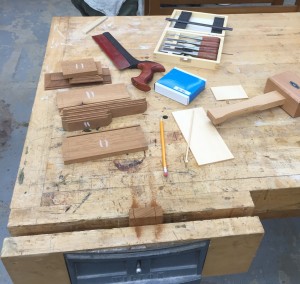
The tools for candle box assembly include: mahogany, chisels, saw, pencil, hammer, and the workbench.
Craftsmen select wood not only for aesthetic purposes, but also for their qualities of strength and workability. For the sides, lid, and feet of the box we used mahogany, and for the base we used pine. Compared to other woods such as oak or walnut, mahogany is relatively easy to work with tools. Like the Dominy craftsmen, we used chisels, a saw, and a hammer. We learned that our most important tool was our work surface, the bench.
Placing each board in the vice, we cut the dovetails by hand using a dovetail saw. There is a certain motion and rhythm that one has to strike when sawing dovetails in order to saw efficiently and not get the blade stuck.
After sawing the left and right sides of the dovetail, the next step required the use of a chisel and hammer. At the workbench, we learned to methodically chisel out a desired piece of wood in order to form the parallel edge of the dovetail. We traced a pattern onto each of the four feet, and cut the feet out on a bandsaw.
The boxes were assembled and adhered together with an animal hide glue. As we joined our dovetails together, we realized the difficulty of executing precise joinery. Several of us filled in visible cracks and imperfections with small woodchips and wood putty. We then sanded each box until the surface was smooth enough to apply a shellac finish.
Cutting dovetails was time intensive and took a degree of specialized skill and knowledge. We cut only one dovetail for each side on our adapted candle boxes, which was humbling in comparison to the four dovetails utilized in the original. Where it took the WPAMC class the better part of a day to assemble one box, an eighteenth-century woodworker or apprentice could have completed the project much faster. Using a combination of traditional and contemporary woodworking practices, we gained a more nuanced and practical appreciation for the realities of woodworking.
By Sarah Berndt, WPAMC Class of 2017


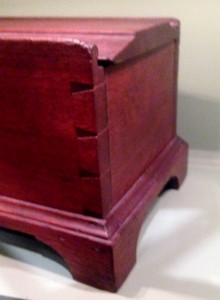


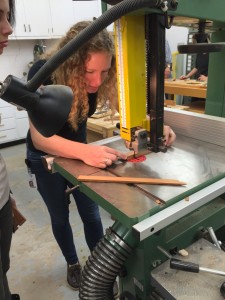
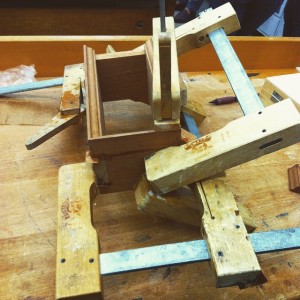
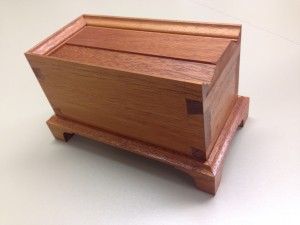
I just read a small snippet about the Dominy shop in Mortise and Tenon magazine. It’s it a site I can physically visit? As a hand tool woodworking enthusiast I would love to see the shop and what it produced.
Thank you,
Jason Zvokel
Hi Jason, thanks for your interest in the Dominy shop. Winterthur has a reconstruction of the Dominy shop in our second floor gallery that includes a display of objects representative of their work, as well as many of the machinery and tools used to create them. This is a self-guided space and only a part of our wonderful galleries. We recommend you visit the Winterthur website for more information and hope you can visit someday!